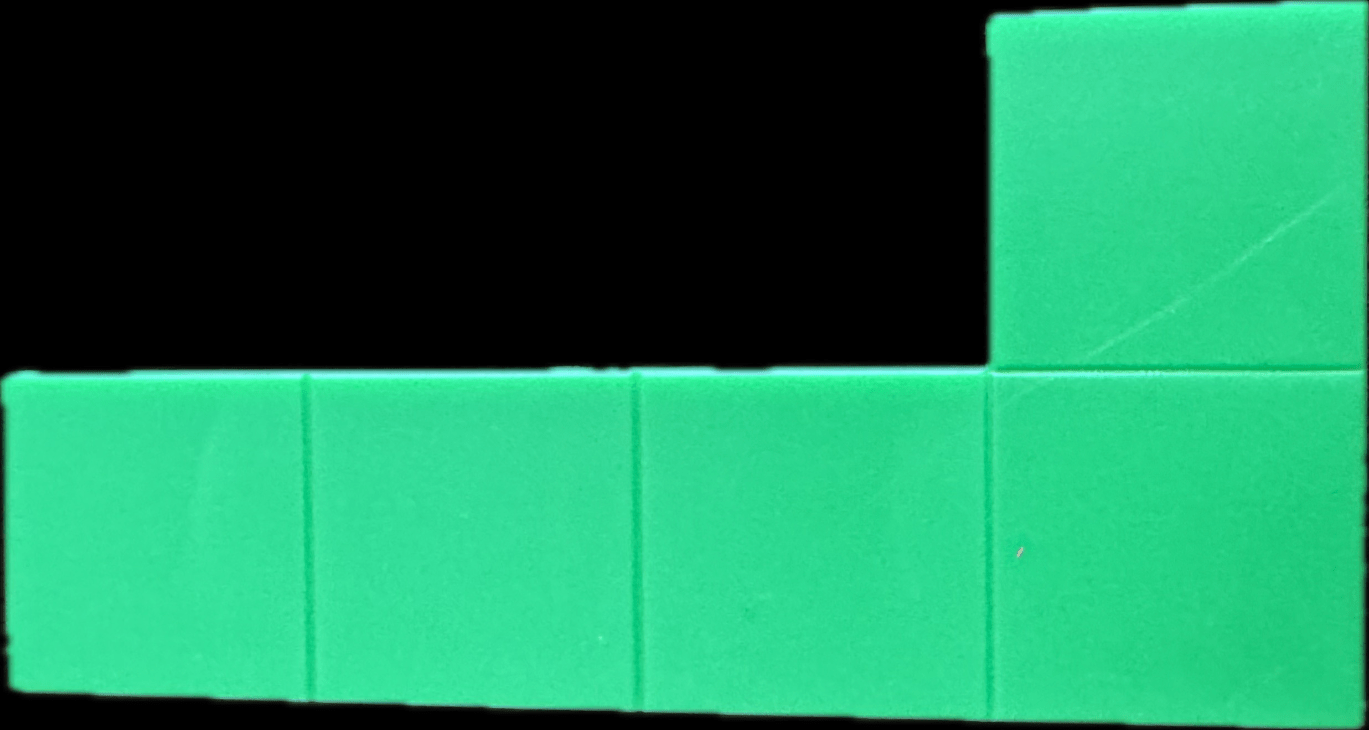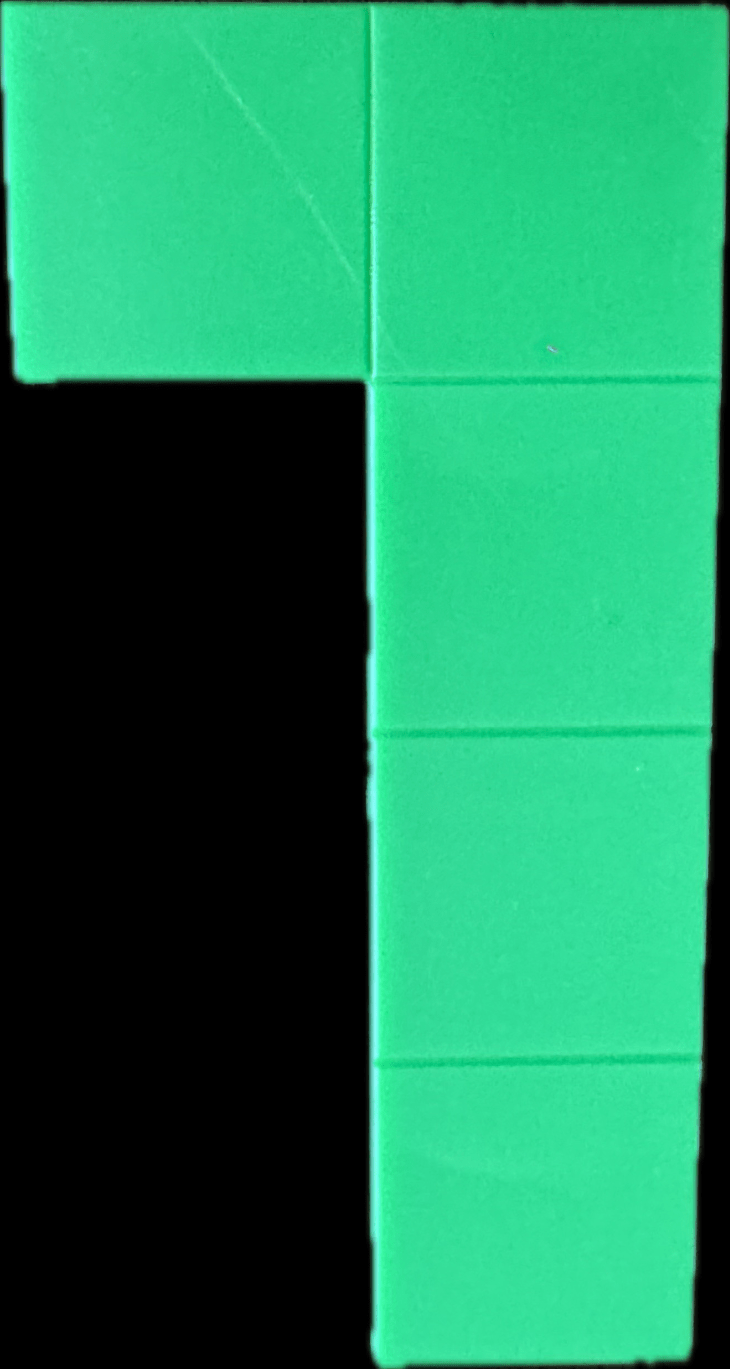What two transformations are needed to move a figure 4 units right and then flip it over the x-axis?
Translation & Reflection
What does it mean for two figures to be congruent?
The figures have to be the same size and shape.
A transformation that slides a figure without turning it.
Translation
What transformation takes (2,3) → (2,-3)?
Reflection across x-axis
A quadrilateral has angles of 90°, 90°, 90°, and x°. Find x.
90°
Give a possible sequence of two transformations that maps a figure onto itself.
Rotate 360 degrees & reflect across a line of symmetry.
True or False: A figure and its reflections across the y-axis are congruent.
True. Reflections preserve size and shape.
A transformation that turns a figure about a point.
Rotation
What transformation takes (4,-1) → (-4,-1)?
Reflection across y-axis
Give a real-life example of a reflection, rotation, or translation that you see outside of math class.
Reflection in a mirror, rotation of a Ferris wheel, sliding a book across a desk, etc.
What sequence of transformations would move figure 1 to figure 2?

Rotation 90 degrees counterclockwise.
Two polygons are congruent. What types of transformations can show this congruence?
Rigid transformations: reflections, rotations, translations
A transformation that flips a figure across a line.
Reflection
After a 180° rotation about the origin, the point (5,-2) moves to where?
(-5,2)
Imagine two students each describe a different sequence of transformations for the same figure. Both sequences get the same final image. What does this tell us?
There can be more than one way to map a figure onto its congruent image.
What single transformation could replace this sequence of transformations: Rotate a figure 90 degrees about the origin, then reflect across the y-axis.
Reflection across the x-axis.
A rectangle is reflected across the y-axis and translated up 5. Is the new figure congruent to the original?
Yes
The point around which a figure is rotated.
Point of rotation
A figure is translated ⟨−3,4⟩\langle -3,4\rangle⟨−3,4⟩. Where does the point (2,-1) move?
(-1,3)
How could you prove to someone that two shapes are congruent without using a ruler or protractor?
By showing one maps to the other using rigid transformations.
A point at (1,1) is translated (2,3) and then rotated 90 degrees counterclockwise. Where does it end up?
(-4,3)
Explain how you could prove two figures are congruent using a sequence of transformations
By showing one can be mapped exactly onto the other without changing side lengths or angles.
A transformation that preserves size and shape is called a ____.
Rigid Transformation
You rotate a polygon 90° CCW, then reflect it across the x-axis. Is the new figure congruent to the original?
Yes
Why do we call rotations, reflections, and translations rigid transformations?
Because they don’t change size or angle measures — the figure stays congruent.